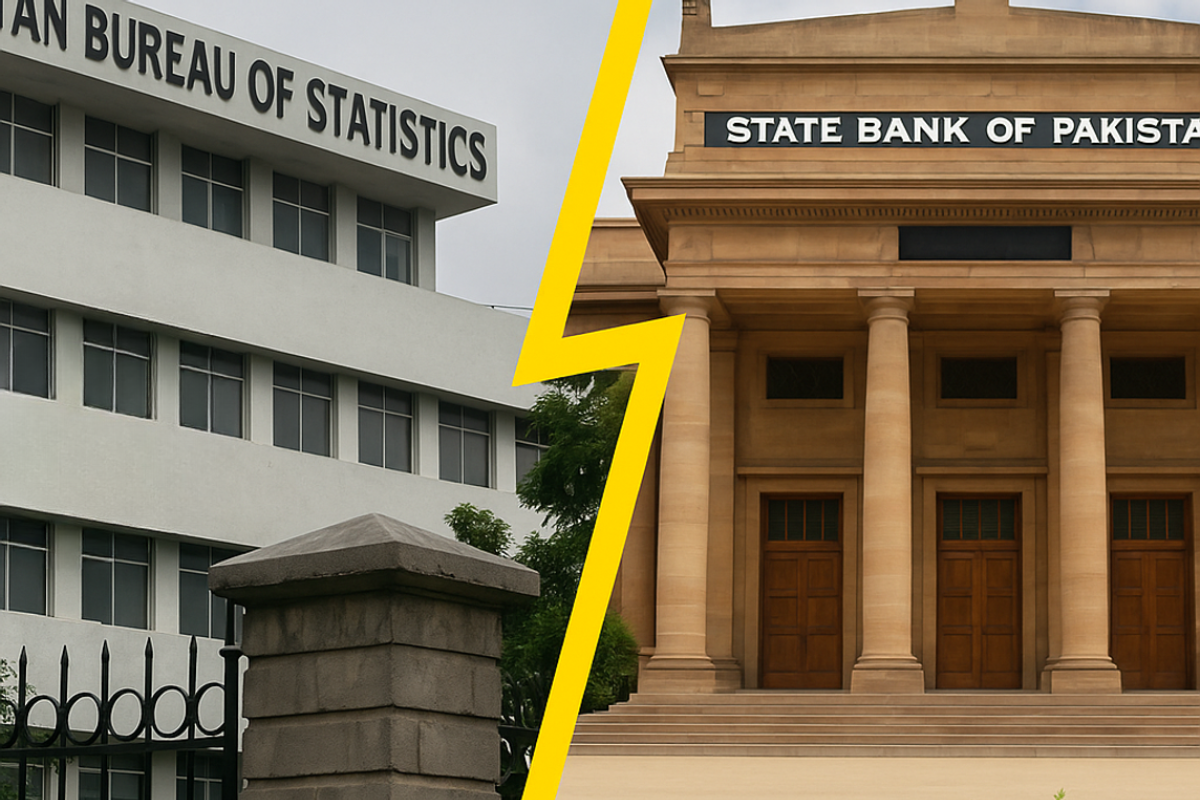The billion dollar question: Why do SBP and PBS figures differ and what's worrisome about it?
Pakistan central bank expects the FY26 current account to stay contained within the 0%-1% of GDP range
Nida Gulzar
Research Analyst
A distinguished economist with an M. Phil. in Applied Economics, Nida Gulzar has a strong research record. Nida has worked with the Pakistan Business Council (PBC), Pakistan Banks' Association (PBA), and KTrade, providing useful insights across economic sectors. Nida continues to impact economic debate and policy at the Economist Intelligence Unit (EIU) and Nukta. As a Women in Economics (WiE) Initiative mentor, she promotes inclusivity. Nida's eight 'Market Access Series papers help discover favourable market scenarios and export destinations.

Ai
When the current account numbers for September were released, analysts and economists across the country went into shock. They had expected a deficit, but what was published instead was a $110 million surplus—opposite of the direction trade data had pointed toward.
The surprise can largely be traced to the discrepancy between trade figures reported by the State Bank of Pakistan (SBP) and the Pakistan Bureau of Statistics (PBS). The difference lies in how each agency records trade: PBS documents trade on a shipment basis, recording goods when they physically leave or enter the country. SBP, on the other hand, records data on a payment basis, capturing transactions when money actually changes hands.
This difference in methodology naturally creates a timing gap and doesn’t necessarily suggest anything suspicious, since payments often occur weeks or even months after shipments.
However, what stands out this time is the scale of the gap. The SBP’s reported trade deficit is about $1.01 billion smaller than PBS’ figure, an unusually large divergence. Historically, such wide gaps tend to narrow in subsequent months as delayed payments are cleared, implying that the trade deficit could widen again in FY26’s second quarter once those pending transactions show up in SBP’s data.
Lessons from 2022: when data gaps preceded a crisis
The disparity between PBS and SBP trade data last widened notably in May 2022, when the revised current account deficit doubled to $1.4 billion. After the provisional figures were updated, the deficit rose further to $1.5 billion, a 135% year-on-year increase.
That episode unfolded during one of Pakistan’s most turbulent economic periods in decades. The country was grappling with twin shocks—a balance-of-payments crunch and soaring domestic inflation—compounded by political uncertainty, devastating floods, and a halted International Monetary Fund (IMF) program for much of the year.
By the end of 2022, the economy was on the brink of default. Foreign exchange reserves had dropped below $6 billion, inflation surged past 25-30%, and the rupee lost nearly 30% of its value against the U.S. dollar.
Outlook: current account to slip back into deficit
The current account deficit amounted to $594 million in FY26’s first quarter, slightly higher than the $502 million deficit recorded in the same period last year. However, unlike the previous year, when subsequent quarters posted surpluses that turned the full-year balance positive, the outlook this time appears less favorable.
While September’s $110 million surplus surprised the market, it’s unlikely to sustain. The widening trade deficit, as seen in PBS data, will soon start reflecting in the SBP’s current account numbers as payment lags close. In simple terms, the delayed deficit will catch up.
Moreover, the broader trend is turning unfavorable. Imports are picking up, especially food, machinery, and petroleum, while exports remain stagnant and remittance growth has slowed. This combination limits any cushion for the external account.
A comparison with 2017 and 2022 shows a similar pattern: once import pressures build without matching export or remittance growth, the current account quickly swings back into deficit.
If we look at FY17 and FY22, we can see that during both years, import pressures surged, reflected in the deeper trade deficit, while remittances did not rise enough to offset those higher imports. As a result, the current account swung sharply into deficit.
This pattern shows that whenever imports widen faster than exports or remittances, the current account balance deteriorates, no matter how stable remittances may appear. The same dynamic is now re-emerging: with imports rising and remittance growth flattening, the current account is likely to slip back into deficit in FY26, just as it did in FY17 and FY22.










Comments
See what people are discussing